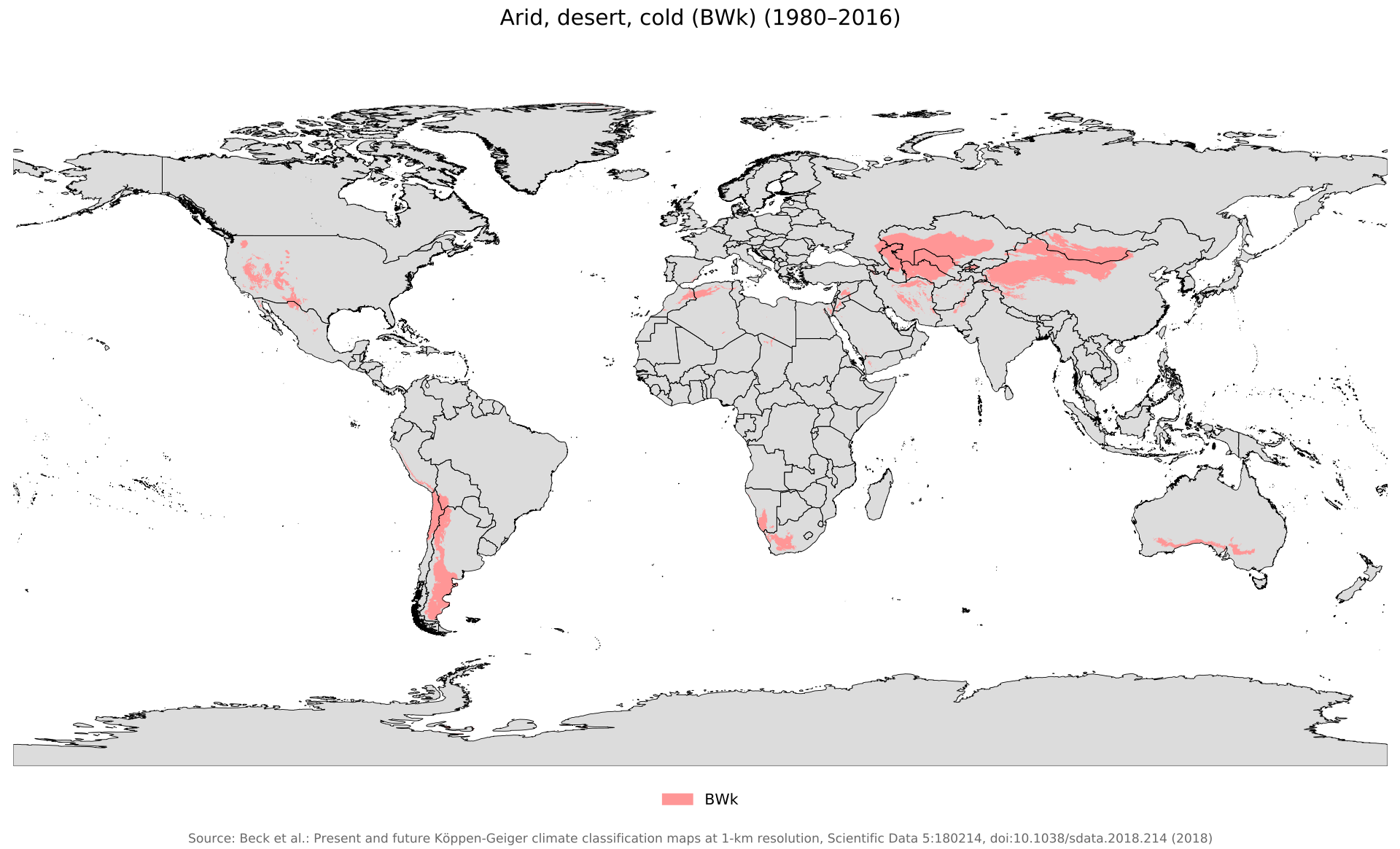Picture a desert and you no doubt imagine a sandy landscape, searing hot dunes, and a baking Sun. However, this is just one side of desert climates. Beyond the Sahara and the Great Australian Desert, some desert environments are more associated with chilly temperatures.
Deserts are defined as areas that receive very little precipitation and don’t necessarily have anything to do with temperature. A lot of deserts are extremely hot with daytime temperatures as high as 54°C (130°F), but they do drop to very low temperatures at night because of the lack of humidity and poor heat-retaining properties of sand.
Alternatively, some deserts have cold climates for prolonged periods regardless of whether it’s day or night. Scientists simply call these cold deserts. Unlike hot deserts, they are typically found around temperate regions at high elevations, such as on plateaus or lying among mountain ranges. They can often be found far inland, severed from the coastal waters that enrich the air with humidity.
Perhaps the most prominent example of this is the Gobi Desert in northern China and southern Mongolia. Its summers are hot, but temperatures in the winter months can remain as low as -38°C (−36.4°F). Part of the reason it can stay so cold is its high latitude on Earth, but it’s also located on a plateau roughly 910 to 1,520 meters (2,990–4,990 feet) above sea level.
The Gobi Desert’s dryness is caused by the rain shadow effect. To its south, you can find the Himalayan Mountains, which block the moisture-rich clouds coming from the Indian Ocean.

Regions with cold desert climates.
Another example is the Patagonian Desert, the largest desert in Argentina. It is relatively warm in the summer, but temperatures rarely exceed 12°C (54°F) in winter when it averages just 3°C (37°F).
There are even examples of cold desert climates in the US, such as the Great Basin Desert, which occupies an area between the Sierra Nevada and the Wasatch Range.
Furthermore, parts of the Arctic and Antarctica are classified as polar deserts. The Antarctic Polar Desert, for example, is technically the largest desert in the world, typically receiving less than 50 millimeters (1.9 inches) of rain per year, most of which falls as snow or ice crystals.
Polar deserts don’t receive much precipitation because the freezing cold temperatures don’t hold much water vapor, resulting in less humidity and less chance of precipitation.
As a whole, Antarctica is the driest continent on Earth. Some of the driest regions of Antarctica, aptly named Dry Valleys, haven’t seen a drop of precipitation for some 2 million years. Along with the continent’s bitter temperatures, its extreme dryness is also caused by the surrounding mountains that shelter the region.
Despite their ferociously dry climate, the Dry Valleys do host life. Don’t expect any seals or penguins, however. The only lifeforms that exist here are extremophile lichens, mosses, algae, and cyanobacteria that have evolved in this extreme environment. Oh, and the odd scientist.
Source Link: Why Are Some Deserts Cold?